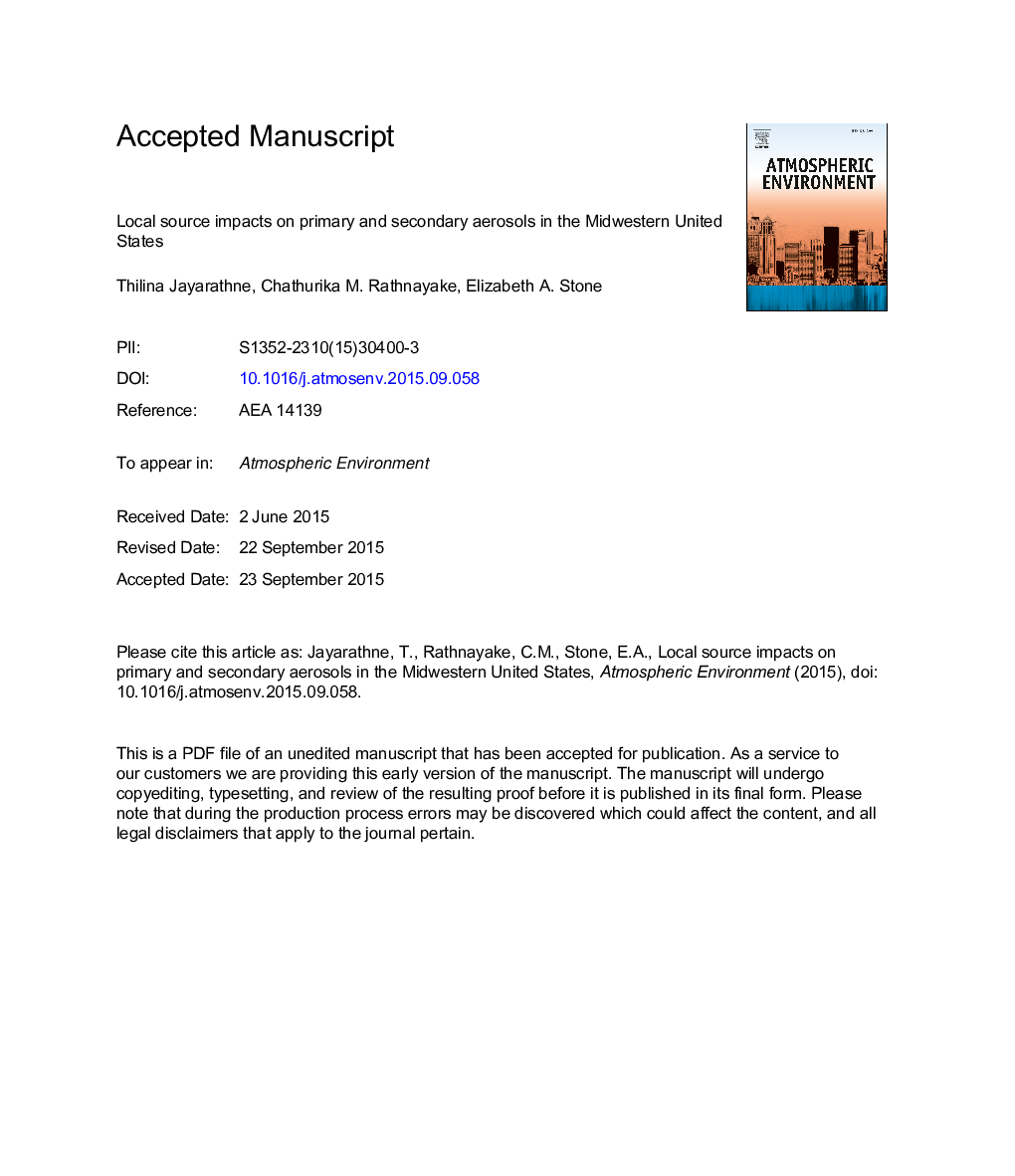| کد مقاله | کد نشریه | سال انتشار | مقاله انگلیسی | نسخه تمام متن |
|---|---|---|---|---|
| 6336614 | 1620344 | 2016 | 46 صفحه PDF | دانلود رایگان |
عنوان انگلیسی مقاله ISI
Local source impacts on primary and secondary aerosols in the Midwestern United States
ترجمه فارسی عنوان
منبع محلی تأثیری بر اسپریهای اولیه و ثانویه در میدوسترن ایالات متحده دارد
دانلود مقاله + سفارش ترجمه
دانلود مقاله ISI انگلیسی
رایگان برای ایرانیان
کلمات کلیدی
آرسنیک آلی متوسط، ایزوپرن، کیفیت هوای شهری، تقسیم بندی منبع،
موضوعات مرتبط
مهندسی و علوم پایه
علوم زمین و سیارات
علم هواشناسی
چکیده انگلیسی
Atmospheric particulate matter (PM) exhibits heterogeneity in composition across urban areas, leading to poor representation of outdoor air pollutants in human exposure assessments. To examine heterogeneity in PM composition and sources across an urban area, fine particulate matter samples (PM2.5) were chemically profiled in Iowa City, IA from 25 August to 10 November 2011 at two monitoring stations. The urban site is the federal reference monitoring (FRM) station in the city center and the peri-urban site is located 8.0 km to the west on the city edge. Measurements of PM2.5 carbonaceous aerosol, inorganic ions, molecular markers for primary sources, and secondary organic aerosol (SOA) tracers were used to assess statistical differences in composition and sources across the two sites. PM2.5 mass ranged from 3 to 26 μg mâ3 during this period, averaging 11.2 ± 4.9 μg mâ3 (n = 71). Major components of PM2.5 at the urban site included organic carbon (OC; 22%), ammonium (14%), sulfate (13%), nitrate (7%), calcium (2.9%), and elemental carbon (EC; 2.2%). Periods of elevated PM were driven by increases in ammonium, sulfate, and SOA tracers that coincided with hot and dry conditions and southerly winds. Chemical mass balance (CMB) modeling was used to apportion OC to primary sources; biomass burning, vegetative detritus, diesel engines, and gasoline engines accounted for 28% of OC at the urban site and 24% of OC at the peri-urban site. Secondary organic carbon from isoprene and monoterpene SOA accounted for an additional 13% and 6% of OC at the urban and peri-urban sites, respectively. Differences in biogenic SOA across the two sites were associated with enhanced combustion activities in the urban area and higher aerosol acidity at the urban site. Major PM constituents (e.g., OC, ammonium, sulfate) were generally well-represented by a single monitoring station, indicating a regional source influence. Meanwhile, nitrate, biomass burning, food cooking, suspended dust, and biogenic SOA were not well-represented by a single site and demonstrated local influences. For isoprene SOA, product distributions indicated a larger role for the high-NOx pathway at the urban site. These local sources are largely responsible for differences in population exposures to outdoor PM in the study domain located within the Midwestern US.
ناشر
Database: Elsevier - ScienceDirect (ساینس دایرکت)
Journal: Atmospheric Environment - Volume 130, April 2016, Pages 74-83
Journal: Atmospheric Environment - Volume 130, April 2016, Pages 74-83
نویسندگان
Thilina Jayarathne, Chathurika M. Rathnayake, Elizabeth A. Stone,
